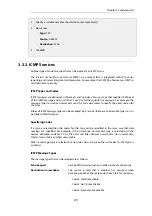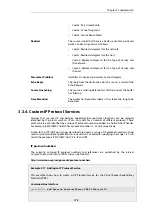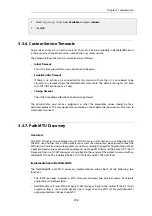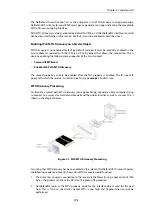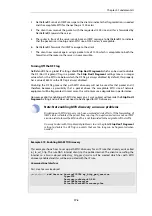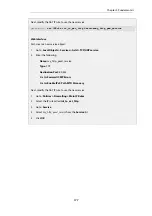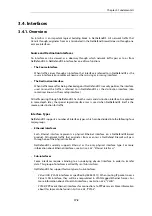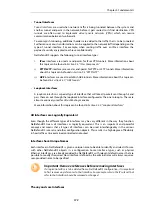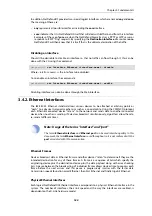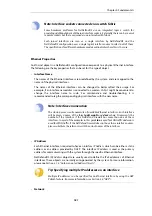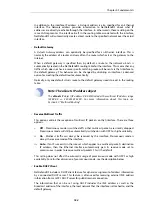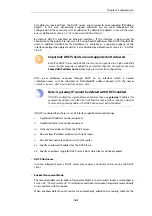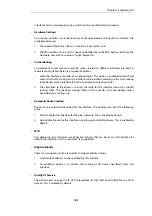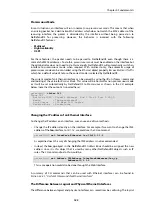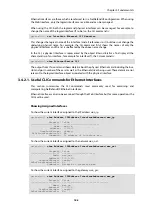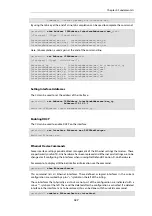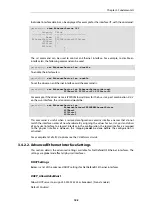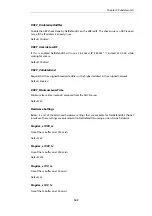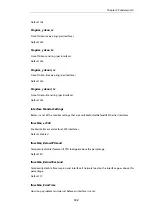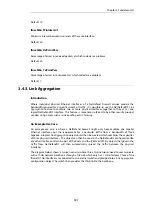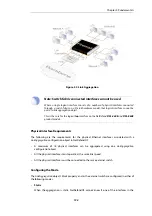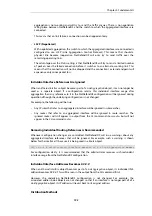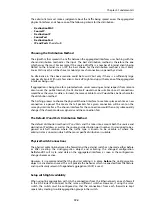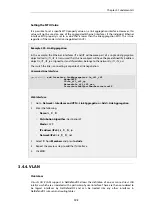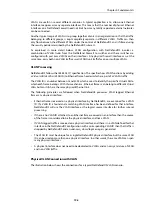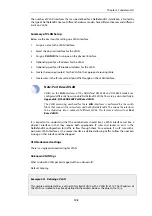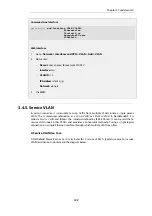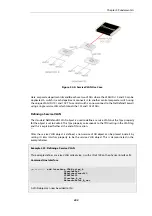
Promiscuous Mode
In most situations, an interface will run in normal,
non-promiscuous mode
. This means that when
an arriving packet has a destination MAC address which does not match the MAC address of the
receiving interface, the packet is discarded by the interface without being passed on to
NetDefendOS for processing. However, this behavior is incorrect with the following
NetDefendOS features:
•
Multicast
•
High Availability
•
OSPF
For these features, the packet needs to be passed to NetDefendOS even though there is a
mismatch of MAC addresses. To do this,
promiscuous mode
must be enabled on the interface but
the administrator does not need to do this manually. NetDefendOS will automatically switch an
interface to promiscuous mode when required. With multicast only, the automatic usage of
promiscuous mode can be controlled using the
Ethernet
object property
Receive Multicast Traffic
which has a default value of
Auto
so the correct mode is selected by NetDefendOS.
The current mode of an Ethernet interface can be viewed by using the
ifstat <ifname>
command
and looking at the value for
Receive Mode
. This value will be
Normal
for non-promiscuous mode
or it will be set automatically by NetDefendOS to
Promiscuous
as shown in the CLI example
below (note that the output is truncated here):
gw-world:/> ifstat If1
Iface Ïf1
Builtin e1000 - Gigabit Ethernet
Bus 0 Slot 4 Port 0 IRQ 0
Media
: "Autonegotiated"
Link Status
: 100 Mbps Full Duplex
Receive Mode
: Promiscuous
Changing the IP address of an Ethernet Interface
To change the IP address on an interface, we can use one of two methods:
•
Change the IP address directly on the interface. For example, if we want to change the IPv4
address of the lan interface to
10.1.1.2
, we could use the CLI command:
gw-world:/> set Interface Ethernet lan IP=10.1.1.2
As explained next, this way of changing the IPv4 address is not recommended.
•
Instead, the lan_ip object in the NetDefendOS
Address Book
should be assigned the new
address since it is this object that is used by many other NetDefendOS objects such as IP
rules. The CLI command to do this would be:
gw-world:/> set Address IP4Address InterfaceAddresses/lan_ip
Address=10.1.1.2
This same operation could also be done through the Web Interface.
A summary of CLI commands that can be used with Ethernet interfaces can be found in
Section 3.4.2.1, “Useful CLI Commands for Ethernet Interfaces”
.
The Difference Between Logical and Physical Ethernet Interfaces
The difference between logical and physical interfaces can sometimes be confusing. The
logical
Chapter 3: Fundamentals
185
Summary of Contents for NetDefendOS
Page 30: ...Figure 1 3 Packet Flow Schematic Part III Chapter 1 NetDefendOS Overview 30 ...
Page 32: ...Chapter 1 NetDefendOS Overview 32 ...
Page 144: ...Chapter 2 Management and Maintenance 144 ...
Page 284: ...Chapter 3 Fundamentals 284 ...
Page 392: ...Chapter 4 Routing 392 ...
Page 419: ... Host 2001 DB8 1 MAC 00 90 12 13 14 15 5 Click OK Chapter 5 DHCP Services 419 ...
Page 420: ...Chapter 5 DHCP Services 420 ...
Page 573: ...Chapter 6 Security Mechanisms 573 ...
Page 607: ...Chapter 7 Address Translation 607 ...
Page 666: ...Chapter 8 User Authentication 666 ...
Page 775: ...Chapter 9 VPN 775 ...
Page 819: ...Chapter 10 Traffic Management 819 ...
Page 842: ...Chapter 11 High Availability 842 ...
Page 866: ...Default Enabled Chapter 13 Advanced Settings 866 ...
Page 879: ...Chapter 13 Advanced Settings 879 ...

